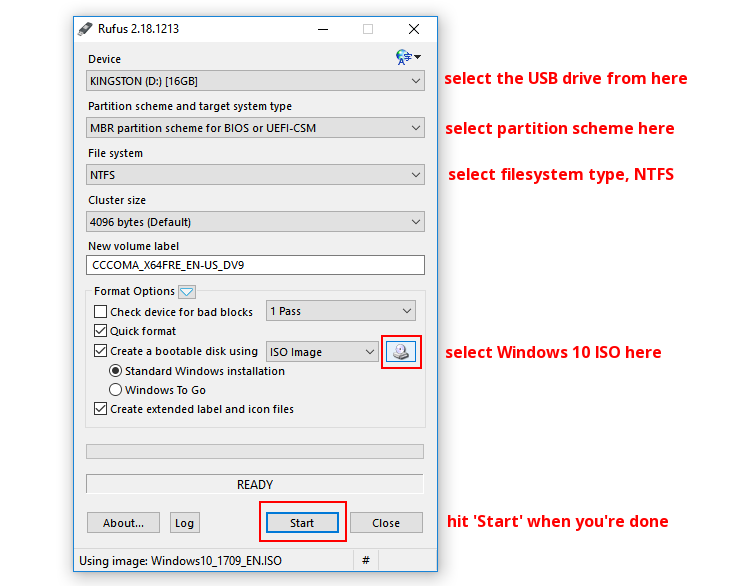

- MAKE A BOOTABLE USB WITH RUFUS ON A WINDOWS MACHINE FOR A MAC MACHINE HOW TO
- MAKE A BOOTABLE USB WITH RUFUS ON A WINDOWS MACHINE FOR A MAC MACHINE INSTALL
- MAKE A BOOTABLE USB WITH RUFUS ON A WINDOWS MACHINE FOR A MAC MACHINE DRIVERS
- MAKE A BOOTABLE USB WITH RUFUS ON A WINDOWS MACHINE FOR A MAC MACHINE UPDATE
- MAKE A BOOTABLE USB WITH RUFUS ON A WINDOWS MACHINE FOR A MAC MACHINE TRIAL
Let’s take a look at the specifics of all these steps, by the end of which you will have a nice little Windows install! 1.

Curse Apple a little bit for making this so difficult.
MAKE A BOOTABLE USB WITH RUFUS ON A WINDOWS MACHINE FOR A MAC MACHINE INSTALL
MAKE A BOOTABLE USB WITH RUFUS ON A WINDOWS MACHINE FOR A MAC MACHINE TRIAL
MAKE A BOOTABLE USB WITH RUFUS ON A WINDOWS MACHINE FOR A MAC MACHINE UPDATE
I downloaded and installed the firmware update and after a terrifying BIOS beep, everything was back to the good old not working ways. Good news, my iMac model has a firmware update, and what’s more, this update has to do with "booting" stuff (is luck finally on my side?). I went back and used the Windows USB/DVD Download Tool which was made by Microsoft. Of course, it didn’t work, it wasn’t seen by the boot manager. I was a bit downcast but I thought: hey, let’s create a bootable USB in Windows! I found a Windows laptop and created an USB using Rufus.
MAKE A BOOTABLE USB WITH RUFUS ON A WINDOWS MACHINE FOR A MAC MACHINE DRIVERS
I tried this with and without Bootcamp drivers and I even tried checking the "Install Windows" options which would automatically start the process for me. It worked at first, but then refused to even acknowledge it in the boot menu. When I saw the option, I promptly clicked on it and let Bootcamp create a startup USB for me. This is something we will need to do further on as a part of our installation, but it still doesn’t work on its own. There is a way in which you can enable this pretty easily though. Apparently this is only available for computers without an optical drive. The only snag with this was that I didn’t have this option. If you were successful in doing so you can basically skip this guide and install via Basecamp, well done! 2. You can also try blowing some compressed air into it. The business end of the drive is at the bottom so if you wiggle it just right, and you’re lucky, you could be successful in cleaning the thing. Cleaning the superdriveĪpparently you can drape something like a lens cleaner over a thin business card, stick the thing into the slot and get to work on it. They all have their eureka moments, but don’t work out in the end.
MAKE A BOOTABLE USB WITH RUFUS ON A WINDOWS MACHINE FOR A MAC MACHINE HOW TO
Read Also: How to Clean Install OS X Mavericks What won’t workĭuring the course of my Windows install venture I figured out at least 6 ways which didn’t work. Skip ahead to the "What Does Work" section if you want to get down to work. It took me a while to stumble on to the solution, which uses a combination of different tools, but it works like a charm and once you’ve done it once, it’s not that difficult. This guide is for those of you who have tried every solution – and upon reading the numerous forums which conclude that Windows "can only be installed via Bootcamp" – have given up. Installing Windows went from being a breeze to being a nightmare in an instant. Recently though I had to reinstall and I found that my built-in Superdrive is broken. I popped in my Windows disk and let Bootcamp do its thing. The process was extremely straightforward. I have a 2011 iMac and I’ve installed Windows on it successfully before.


 0 kommentar(er)
0 kommentar(er)
